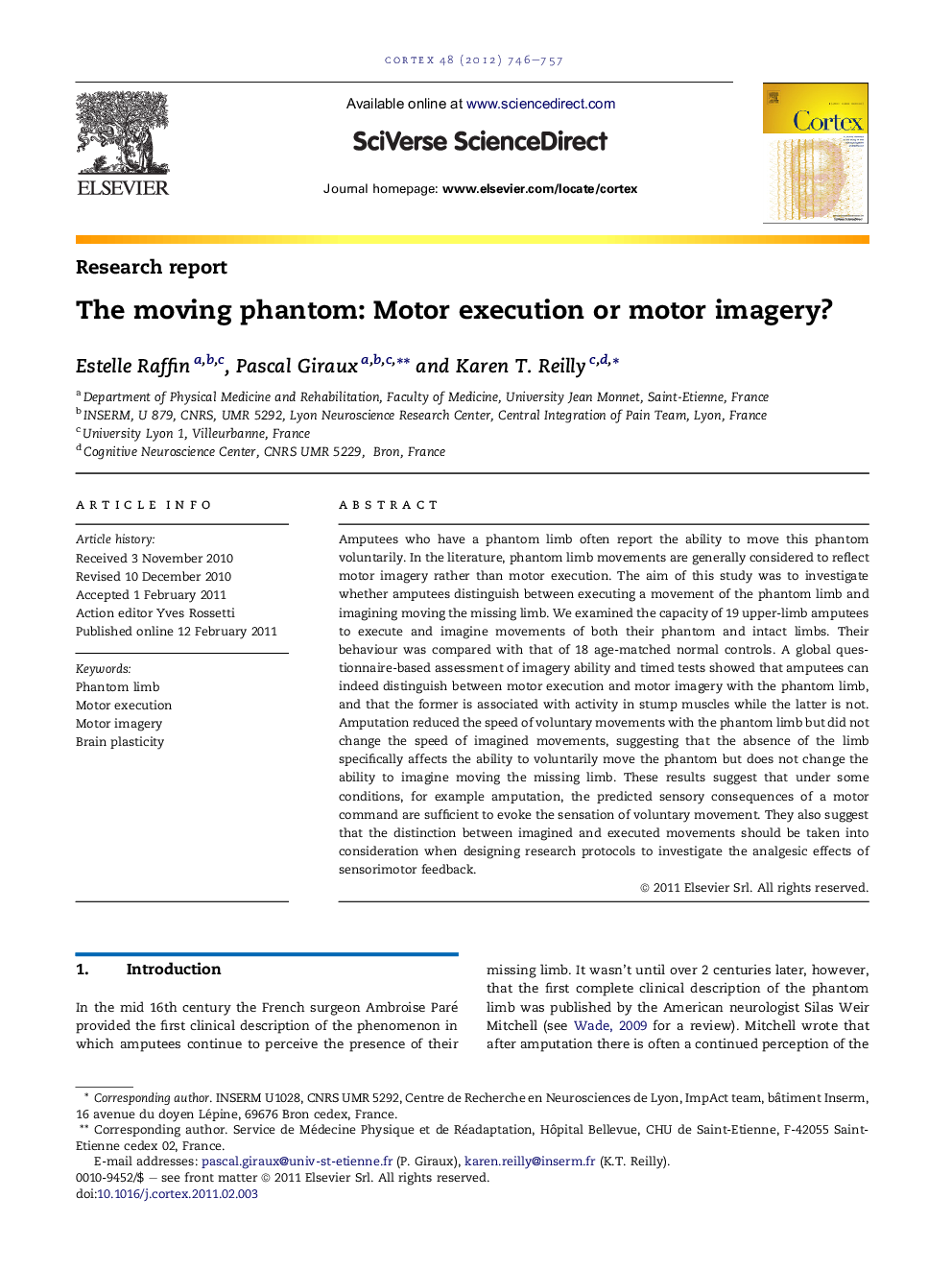| کد مقاله | کد نشریه | سال انتشار | مقاله انگلیسی | نسخه تمام متن |
|---|---|---|---|---|
| 942253 | 925120 | 2012 | 12 صفحه PDF | دانلود رایگان |

Amputees who have a phantom limb often report the ability to move this phantom voluntarily. In the literature, phantom limb movements are generally considered to reflect motor imagery rather than motor execution. The aim of this study was to investigate whether amputees distinguish between executing a movement of the phantom limb and imagining moving the missing limb. We examined the capacity of 19 upper-limb amputees to execute and imagine movements of both their phantom and intact limbs. Their behaviour was compared with that of 18 age-matched normal controls. A global questionnaire-based assessment of imagery ability and timed tests showed that amputees can indeed distinguish between motor execution and motor imagery with the phantom limb, and that the former is associated with activity in stump muscles while the latter is not. Amputation reduced the speed of voluntary movements with the phantom limb but did not change the speed of imagined movements, suggesting that the absence of the limb specifically affects the ability to voluntarily move the phantom but does not change the ability to imagine moving the missing limb. These results suggest that under some conditions, for example amputation, the predicted sensory consequences of a motor command are sufficient to evoke the sensation of voluntary movement. They also suggest that the distinction between imagined and executed movements should be taken into consideration when designing research protocols to investigate the analgesic effects of sensorimotor feedback.
Journal: Cortex - Volume 48, Issue 6, June 2012, Pages 746–757